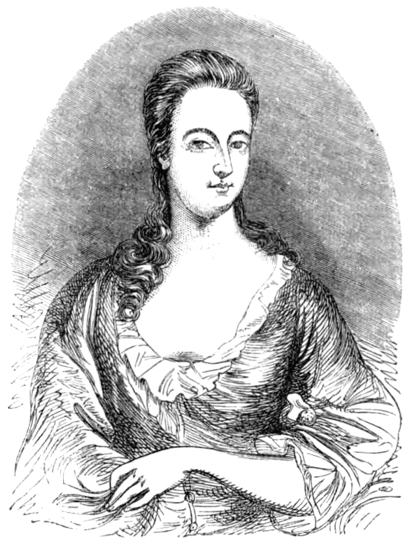
It is 1739. A woman had to be strong to make her way amid the conventions of the age. When the withheld truths that uphold those conventions begin to unravel around Kitty, she finds herself alienated from all she knows and loves.
Through an unexpected invitation she visits London society. There she becomes the keeper of a secret, which leads her into a deception of her own.
With few options Kitty determines to live a conventional life, but when tragedy strikes, misunderstandings follow and her life unravels once more. All the while she keeps her secret close, but the time will come when she can keep it no longer.
Author’s Inspiration
Kitty Canham by Nicola Matthews is a fictional account of the extraordinary true story of the 18th Century bigamist who was born in Thorpe-le-Soken, Essex. Kitty would have walked the same liminal landscape some three hundred years before Nicola. Here she explores how her fascination with the local stories led her to consider the reasons behind the extraordinary decisions Kitty made in her lifetime, and to breathe life into a ‘real’ character again….
Kitty Canham was born in 1720 in Beaumont-cum-Moze, a village nestling on the edge of the Walton backwaters in North Essex. She is a Yeoman’s daughter, close to her father and wedded to the farm and the land. We moved to a house on the backwaters ten years ago. From my window I began follow the ever changing nature of the landscape and became much more aware of the rhythm of the farmer’s year. This year a whole crop was diseased and I realised, perhaps for the first time, how devastating such a thing can be. In the England of Kitty’s time, the community relied on a good harvest simply to survive. They would have learnt to read the weather and the soil and would have farmed in close relationship to the natural world. The industrial revolution had not yet taken hold.
Our home was built on a brickfield. It was unlikely to have been such in Kitty’s time, but we have photographs of the old brickfield sheds with carts and horses waiting to be loaded. They are reminiscent of a time when London relied on raw goods from our shores. At high tide the waters would have been busy with barges collecting their cargo from the small quays where locals now swim. As the tide ebbed a stillness would have settled over the silken muds. Birds would hover searching out freshly exposed prey, just as they do now.

Although separated by 300 years, Kitty and I share an experience of this landscape which is reflected in my writing. The tidal waters leave a liminal space all along the shore. It is neither land nor sea, neither here nor there. Kitty’s emotional journey is echoed in the landscape as she fights to forge a path in life, often finding herself in her own liminal space, pulled by the dual forces of her own desires and the conventions of the age.
At twenty five Kitty married a rector in Thorpe-le-Soken, a neighbouring village. I set out by asking myself one question; why did she not marry sooner? I find that having a problem to solve ignites the creative process. Slowly ideas began to form and soon the fictional elements of Kitty’s story started to form.
Many of the old buildings in Thorpe still stand. The Bell Inn is one of them and continues to serve the village. Although there was a fire in 1999 which destroyed the roof, many of the old timbers remain. It is said that Kitty still haunts the Bell, the reasons for her hauntings are still guessed at around the inglenook on a winter’s evening. I was brought up in a fifteenth century farm house, which informed my vision of Kitty’s home. I remember so keenly the feel of the old beams, the smell of the open fires and the creaking of wood as the seasons changed.
When Kitty is invited to London to a twelfth night masquerade, her experience would have been quite different. London’s West End was becoming ever more fashionable. However, Golden square, where the ball is held, was past its hey day. At one time six peers owned property in the square, a sure sign of a desirable area, but by the time Kitty arrives there is only one left. None-the-less for her tradesman host, Mr Bastion, it was something to boast about. He stands among his new building on the square, satisfied at his own good fortune, on this occasion sporting extravagant fancy dress.
The licentious nature of such parties must have been astonishing to Kitty; a country woman among city folk. She was both intrigued and somewhat overwhelmed. The liberality of London society opens Kitty to a much larger world view than she would ever have known on the small peninsular on which she lived. A celebration in the country and a celebration in the city would have been very different affairs. The novel begins when Kitty is nineteen and the harvest home gathering is at hand; the fire is lit, music is playing and cider flows. It would have been a simple celebration of another year survived. In London, however, it would not likely have been a celebration of wealth and excess.
The brevity of life is ever present in the novel. Death was no stranger. I am a celebrant and am aware that ceremony, like celebration, was once very much a part of people’s coping mechanism. It helped to give them a sense of the ongoing nature of life through the generations, much as religion would have done. Kitty travels to Brittany and partakes in a rural ceremony, which was entirely of my imagination, but which, I hope, gives a sense of the beauty that such ceremonies can hold and must have held in an era when life was so fragile.
The facts of Kitty’s life are intriguing, but few. We know of her birth and family, of her marriage and disappearance. We know that a young man was apprehended by customs officials off the coast of Colchester for smuggling. His contraband turned out to be the body of young woman who was recognised by an official. It was Kitty. Both her husbands followed her to her final resting place in Thorpe-le-Soken. The rest is of the story is woven around these few facts to create the life Kitty Canham, a young woman in a raw and fragile age.
Amazon UK: https://www.amazon.co.uk/Kitty-Canham-Love-loss-necessary/dp/1739669800
Amazon US: https://www.amazon.com/Kitty-Canham-Love-loss-necessary-ebook/dp/B09ZQ5GNPG
Meet Nicola Matthews

Nicola Matthews was inspired by the ragged North Essex coastline, where she lives with her husband, to write Kitty Canham’s story. She was an undiagnosed dyslexic until her mid-forties and has worked as a sculptor and in the theatre, writing and producing community productions. She is also the author of Anxt and Other Poems, a poetry anthology. It was the unexpected gift of lockdown that gave Nicola the time and inclination to finally write her debut novel, Kitty Canham.
Connect with Nicola
Webpage: www.nicolamwrites.com/novel
Facebook: http://www.Facebook.com/NicolaMatthewsAuthor
Twitter: http://www.twitter.com/nicola_author